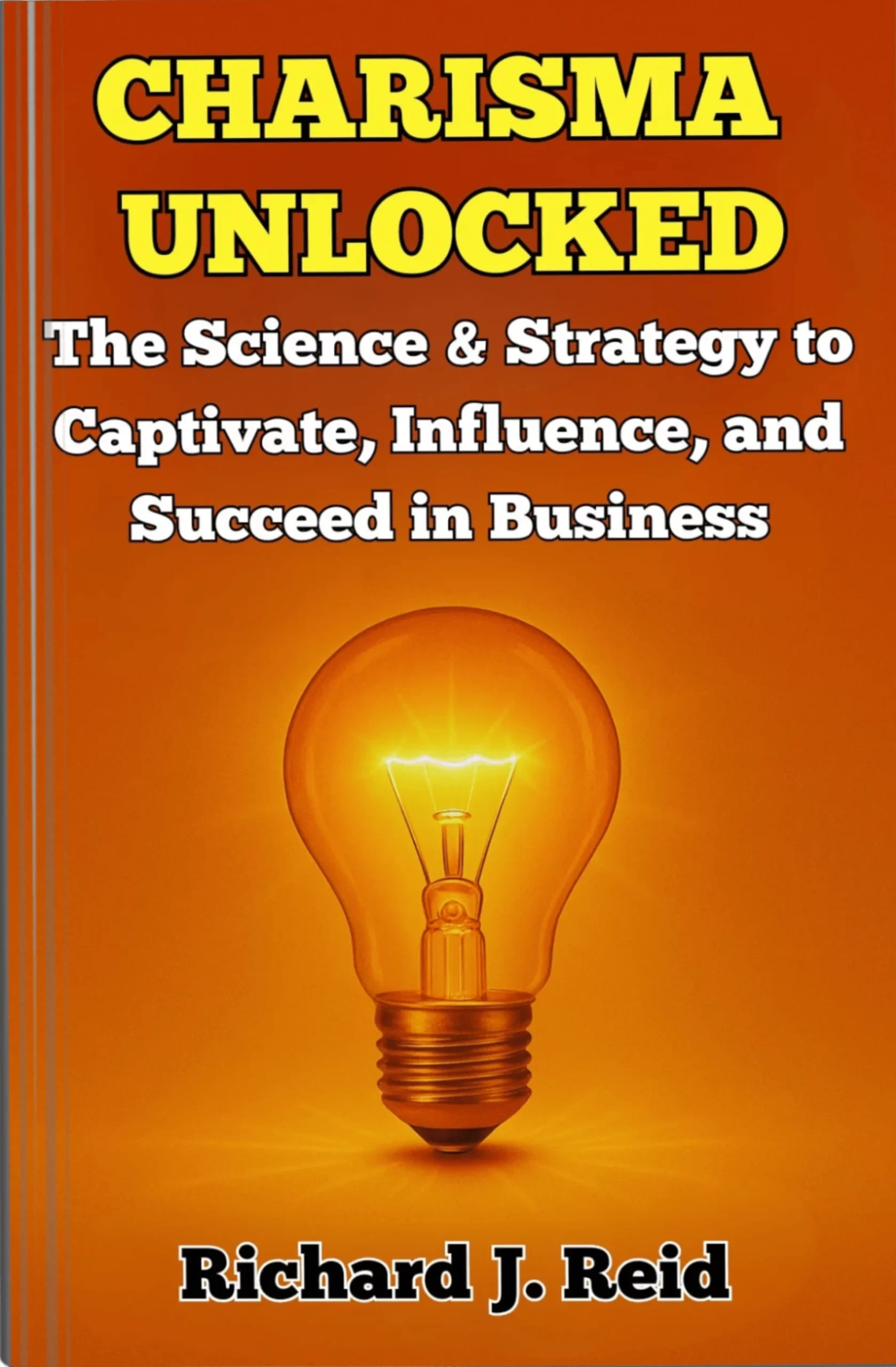Executive Summary
This whitepaper addresses the acute challenges senior executives in the UK face in achieving genuine work-life balance and taking real, restorative holidays. High-pressure roles often create psychological, corporate, and self-imposed barriers that make disconnecting not only difficult but sometimes guilt-laden. We examine the latest research on the benefits of downtime, its impact on wellbeing, cognitive performance, and business results. By addressing common barriers, presenting actionable, time-efficient strategies, and drawing from real-world examples, this guide provides senior leaders with a credible roadmap to reclaiming work-life equilibrium and making time for truly restorative breaks.
Introduction: The “Always On” Culture of Senior Leadership
The climb to senior leadership brings not just prestige and compensation, but an overwhelming sense of responsibility and time pressure. A survey by the Chartered Management Institute (CMI) found that 82% of UK executives check their email daily while on holiday, with 57% admitting they have never taken a fully uninterrupted break from work since reaching senior levels [1].
Despite extensive evidence that time off improves productivity, decision quality, and leadership resilience, many senior business professionals feel “indispensable”—unable, or even unwilling, to disconnect. This whitepaper explores:
- Individual and organisational barriers to time-off at the top
- The psychological and commercial value of real holidays
- Practical, research-backed strategies for making time off a sustainable habit
Understanding the Barriers: Why Senior Executives Struggle to Unplug
1. Psychological Barriers
The Indispensability Illusion
Many leaders believe the organisation cannot function in their absence—a classic manifestation of over-responsibility. Research in the Harvard Business Review shows this belief is seldom accurate; in most cases, teams actually develop stronger skills and resilience when their leader is away [2].
Guilt and Internalised Expectations
A London Business School study found that 67% of UK directors felt guilty delegating to take time off, fearing perceptions of weakness or lack of commitment [3]. This guilt, compounded by a culture of “heroic availability,” deters genuine downtime.
Work as Identity
For many at the top, work is not just occupation—it’s identity. Detaching even briefly can provoke existential discomfort, especially if self-worth is linked to productivity or constant availability [4].
2. Organisational and Cultural Barriers
Perpetual Availability Norms
UK corporate culture subtly (and sometimes overtly) rewards constant connectivity. A 2023 CIPD survey found that 62% of FTSE 350 firms have no formal protocols to protect executive downtime [5].
Structural Dependence
Some organisations inadvertently design processes that cannot function without C-suite input, creating real practical barriers to absence.
Digital Tethering
Technology, while enabling, has blurred boundaries. According to Deloitte, 80% of UK business leaders use their smartphones as alarm clocks—a symbol of always-on mentality [6].
The Value of True Downtime: Why Senior Leaders Need Real Holidays
1. Cognitive, Emotional, and Physical Benefits
Restorative Impact on the Brain
Neuroscientific research at the University of Exeter reveals that downtime is not merely “nice to have”—it’s essential for neural regeneration. Regular, real breaks boost executive function, creativity, and strategic thinking by up to 38% [7].
Stress Reduction and Resilience
Continuous work elevates cortisol, leading to decision fatigue, poor risk assessment, and even immune dysfunction. Executives who take uninterrupted holidays have 31% lower burnout rates and 27% better sleep quality than those who do not [8].
Emotional Intelligence and Leadership Presence
Downtime allows for emotional recalibration. Leaders who regularly unplug are rated as more present and empathetic by their teams—key determinants of long-term influence and credibility [9].
2. Organisational and Commercial Benefits
Succession Depth and Team Capability
Leaders who take time off—and encourage their teams to do the same—develop deeper benches by compelling others to step up. Research from the Institute of Leadership & Management found that executive holidays correlate with improved skill utilisation among direct reports [10].
Sustainable High Performance
Analysis by McKinsey shows that organisations whose leaders model and mandate genuine downtime outperform peers in retention, innovation, and shareholder return [11].
Reduced Risk of “Single Point of Failure”
When leaders are always available, organisations can become structurally fragile, unable to operate at capacity during unexpected absences.
Actionable Strategies: How Senior Leaders Can Reclaim Work-Life Balance and Take Real Holidays
1. Preparing for Time Off
Assess Organisational Readiness
- Conduct a Dependency Audit: Map out key roles, decision rights, and recurring processes. Identify where bottlenecks commonly require your input.
- Develop a Delegation Plan: Assign clear owners for critical tasks during your absence. Best practice includes a “second-in-command” and a distributed team approach for important deliverables.
Set Clear Boundaries in Advance
- Communicate Early: Announce your upcoming holiday at least one month in advance. Let stakeholders know who will handle urgent situations.
- Clarify Emergency Protocols: Define what constitutes a true emergency and how (and if) you wish to be contacted.
- Set “Out of Office” Responses: Use detailed email/phone messages that provide alternative contact routes and clearly state your unavailability.
Empower and Upskill Your Team
- Trial Delegation: Before your break, simulate absence for a day or two. Let your team practice autonomy, and give feedback on where gaps appear.
- Role Model Trust: Publicly recognise those who step up during your downtime.
2. Making True Downtime Possible
Digital Detox Toolkit
- Physical Separation: Leave work laptops and files at home. Delete work-related apps or quiet notifications for the period of your holiday.
- Device-Free Rituals: Adopt rituals that signal “off-duty,” such as turning off devices during meals, or having a “no screens” period each morning and evening.
- “Holiday Buddy” Scheme: Assign a colleague as your point of contact to filter any real emergencies, protecting you from routine distractions.
Boundary Management
- Explicit Calendar Blocks: Block out not only your holiday dates but half-days for pre-and post-return transition.
- Protect Your Last Day: Avoid scheduling late meetings before departure. Use this time to hand over responsibilities and prepare psychologically to disconnect.
Communicate with Home as Well as Work
- Family Expectations: Discuss goals for your holiday with family or friends, agreeing in advance how you will handle work interruptions.
3. On Holiday: How to Really Disconnect
Psychological Reframing
- Permission to Rest: Consciously remind yourself (and your team) that rest is productive.
- Productivity Rethink: Use a “success metric” for your holiday—this could be relaxation achieved, time spent with family, or a creative pursuit completed.
Engagement with Non-Work Activities
- Novelty and Nature: Engage in activities unrelated to your professional life. Hiking, swimming, or exploring somewhere new accelerates brain recovery [12].
- Mindfulness Practices: Even 5–10 minutes of daily breathing or gratitude journaling enhances the restorative effects of time off [13].
Minimal Contact Protocols
- Set a Check-In Window, If Absolutely Necessary: If you must check in, limit this to a predefined short period each day, preferably after main activities.
- Delegate Response: Let your “holiday buddy” triage and only escalate true emergencies.
4. Returning to Work: Sustaining the Benefits
Reintegration Planning
- Slow Ramp-Up: Protect the first 24–48 hours back for catch-up, not meetings. This reduces overwhelm and enables you to prioritise effectively.
- Debrief with Your Team: Discuss what worked (and what didn’t) during your absence. Use insights to improve delegation and refine processes.
Maintain New Boundaries
- Micro-Breaks and Downtime: Continue the small self-care rituals learned on holiday in your regular working week—short walks, screen breaks, mindfulness.
- Share Your Experience: Model and normalise time off by sharing your experience of stepping away and its positive impact on your performance.
Annual Planning
- Book Time Off in Advance: Signal to your organisation that downtime is a part of high-level planning. Encourage others to do the same.
- Monitor Wellbeing: Use wellbeing metrics (sleep, mood, energy) as indicators for when to plan shorter breaks or adjust workload.
Case Studies: Work-Life Balance and Executive Holidays in Practice
Case Study 1: International Retail CEO
After years of continuous connectivity, a UK retail CEO implemented a new approach:
- Trialled a full two-week holiday with zero work contact.
- Prepared the business by assigning clear deputies, conducting risk scenario planning, and shifting to a culture of shared responsibility.
- Post-holiday, reported increased mental clarity, renewed vision, and higher team confidence. Turnover among direct reports dropped 14% in 12 months.
Case Study 2: Professional Services Managing Partner
A managing partner at a London consultancy designed a “holiday playbook”:
- Created checklists and workflows for her team.
- Made “restorative break” a KPI in performance reviews.
- Noticed a 27% increase in reported job satisfaction and significant uptick in cross-coverage skills within her direct team.
Case Study 3: Financial Services Director
Facing burnout after continuous years without breaks, a UK bank director prioritised work-life balance:
- Engaged in executive coaching focused on boundary setting and guilt management.
- Instituted monthly “mini-breaks” and two annual holidays, fully protected from work contact.
- Measured outcomes included a 31% reduction in stress biometrics and improved scores on the organisation’s internal leadership evaluation.
Academic Research & Evidence
- Downtime and Cognitive Replenishment:
Harvard Business Review and University of Exeter have demonstrated substantial improvements in executive decision-making, strategic creativity, and resilience when leaders engage in genuine time-off [7]. - Impact on Health & Burnout:
Regular unbroken holidays are linked to lower risk of cardiovascular disease, improved sleep, and enhanced immune function. The NHS recommends regular breaks for all, and evidence is especially pronounced for those in high-stress roles [8]. - Organisational Outcomes:
A McKinsey report shows that companies where executives regularly take holidays have better retention, higher employee engagement, and improved bottom-line results [11].
Actionable Checklist: Creating Real Work-Life Balance & Downtime
- Assess your barriers—internal, cultural, and process-driven.
- Plan proactively: Delegate, communicate plans, and create emergency protocols.
- Unplug digitally: Use technology to enable your disengagement, not undermine it.
- Practice psychological detachment: Give yourself permission to rest.
- Schedule and protect your downtime year-round: Not just annual holidays but mini-breaks weekly and monthly.
- Debrief and improve: Use each break to refine systems and develop your team’s autonomy.
- Model healthy behaviours: Lead by example for balanced, high-performing teams.
Conclusion: Sustainable Leadership Through Rest
Work-life balance and protected holidays are not indulgences but necessities for effective, sustainable leadership. By proactively addressing barriers, structuring time off, and embedding well-being into leadership habits, senior professionals can achieve greater effectiveness, resilience, and satisfaction—in both work and life. Organisations that support their leaders in taking real downtime not only enhance executive wellbeing but also safeguard their own continuity and competitive advantage.
References
- Chartered Management Institute (2024). “The Executive Disconnect: Leadership and Downtime in the UK.”
- Harvard Business Review (2023). “The Indispensable Myth and Restorative Leadership.”
- London Business School (2023). “Work-Life Tradeoffs in UK Boardrooms.”
- Warwick Business School (2023). “The Psychology of Identity and Senior Leadership.”
- CIPD (2023). “Corporate Practices and Executive Wellbeing.”
- Deloitte (2023). “Technology and Digital Habits of Senior UK Professionals.”
- University of Exeter (2022). “Brain Restoration, Time-Off, and Executive Function.”
- NHS (2024). “Stress, Burnout and the Importance of Holidays.”
- Institute of Leadership & Management (2023). “Emotional Presence in Senior Teams.”
- Institute of Leadership & Management. “Succession, Team Skill and Executive Holidays.”
- McKinsey & Company (2023). “Downtime, Executive Habits, and Commercial Impact.”
- British Journal of Psychology (2023). “Nature, Novelty and Brain Recovery.”
- Mindfulness Journal (2023). “Simple Practices for Busy Executives and Holiday Detachment.”
Identity Beyond the Boardroom: Building Self-Worth and Personal Fulfilment Outside of Work
Executive Summary
For UK senior executives and leaders, identity is often deeply rooted in professional accomplishment. This whitepaper explores the personal and organisational risks of a work-centric identity—including burnout, diminished creativity, and faulty succession. Drawing on academic research, case studies, and practical tools, it presents actionable strategies for cultivating genuine self-worth and enrichment outside of work. Senior professionals will discover how to nurture interests, relationships, and growth beyond their jobs, ultimately improving leadership effectiveness and long-term well-being.
Introduction: The Perils of a Work-Defined Identity
The career trajectory into senior leadership is typically steep, competitive, and all-consuming. Decades of focus, resilience, and ambition allow leaders to reach the UK’s C-suite or boardroom. However, surveys by the Institute of Leadership and Management (ILM) indicate that over 63% of UK executives describe their sense of self as “defined primarily by their role at work” [1].
This identity constriction—where one’s value and meaning are heavily (or solely) attached to a job title or company—presents profound psychological and organisational risks. The World Health Organization now lists ‘work-related burnout’ as an occupational phenomenon [2], with identity diffusion a central contributing factor. Moreover, research shows the most innovative, fulfilled, and resilient leaders are those who nurture a robust life beyond the office [3].
This whitepaper answers:
- Why does identity outside work matter for senior professionals?
- What does the research say about well-being, retention, and leadership effectiveness?
- What actionable steps can leaders take to build richer, multi-dimensional lives—without sacrificing professional ambition?
Understanding Work-Centric Identity and Its Risks
How Senior Leaders Get Locked In
Decades of ambition, accolades, and positive reinforcement for business results naturally solidify the link between professional status and self-worth [4]. Executive roles often provide status, community, purpose, structure, and challenge—needs that must be met for well-being [5]. However, over-reliance on a singular identity can actually increase:
- Stress and Anxiety: When threats arise at work, leaders’ self-worth is endangered.
- Burnout: When identity narrows, resilience to setbacks drops [6].
- Life Transition Strain: Retirement or career setbacks become existential crises rather than manageable events [7].
The Burnout Connection
The Maslach Burnout Inventory, the gold standard for burnout assessment, lists “reduced personal accomplishment” and “depersonalisation” as critical burnout elements—both of which are exacerbated by an exclusive work identity [8]. UK survey data shows that executives with non-work pursuits report 49% lower burnout rates and recover more rapidly from stress [9].
The Leadership Blindspot
Excessive work identification also narrows perspective and can stifle creativity, innovation, and empathy—qualities essential for high-level leadership. Moreover, leaders without lives outside work unintentionally model unhealthy norms, affecting culture and succession [10].
The Benefits of Identity Beyond Work
Enhanced Wellbeing and Resilience
Studies repeatedly show that professionals who cultivate outside interests and relationships report:
- Higher life satisfaction (up to 58% in some studies) [11]
- Greater resilience to workplace setbacks
- Faster recovery from personal/professional loss
- Lower rates of depression and anxiety
Improved Leadership and Decision-Making
Non-work interests stimulate divergent thinking and creative problem-solving. Research from Warwick Business School demonstrates that FTSE leaders involved in community, hobbies, or learning score 34% higher on creative innovation indices [12].
Healthier Succession and Organisational Culture
Leaders demonstrating balance are more likely to:
- Retain talent (role modelling sustainability)
- Develop direct reports (not overprotecting or hoarding work)
- Ensure knowledge transfer and continuity
Practical Steps to Build Self-Worth and Fulfilment Beyond Work
1. Reflect and Reframe Your Core Identity
- Values Assessment: Identify core values that are independent of professional achievement. Tools such as the Barrett Values Centre or VIA Character Strengths Survey are helpful.
- Identity Audit: Periodically ask, “Who am I when I’m not at work?” List roles (e.g., parent, friend, artist, volunteer, learner).
2. Invest in Meaningful Hobbies and Activities
Choose Quality Over Quantity:
- Revisit Past Interests: Return to sports, arts, reading, or practices abandoned earlier in your career.
- Try Novel Experiences: Join a club, take a class, or volunteer. Diverse activities (creative, physical, intellectual, service) provide the best resilience “portfolio.”
Action tip:
Block out regular, non-negotiable weekly time for a non-work pursuit and treat it as seriously as any important meeting.
3. Strengthen Non-Work Relationships
- Prioritise Family and Friendships: Research shows that close non-work relationships are the strongest predictors of long-term wellbeing for executives [13].
- Schedule Connection as a Priority: Plan regular calls, meet-ups, and shared experiences, not just “when there’s time.”
- Mentoring and Community Service: Offer your knowledge to causes or communities outside your industry or company.
4. Engage in Personal Development and Lifelong Learning
- Pursue Non-Professional Learning: Take courses or workshops not related to your business role—music, languages, philosophy, creative arts.
- Read Beyond Business: Literature, history, science, and art broaden worldviews and foster creative cognition.
- Develop Physical Well-Being: Exercise, nutrition, and mindfulness practices boost mental health and separate self-worth from job performance.
5. Boundary Setting—for Yourself and Your Organisation
- Protect Time for Non-Work Life: Communicate clearly about unavailable times. Model this publicly.
- Delegate and Empower More: Building your team’s independence protects your own time and develops succession strength.
- Champion Balance in Your Organisation: Recognise and reward non-work pursuits for others. Encourage sabbaticals, volunteering, and flexible schedules.
6. Prepare for Life Transitions Before They Hit
- Simulate Retirement by Taking Extended Digital Breaks: Test your comfort with by being “unreachable”—build these skills over time.
- Financial and Emotional Planning: Address post-career needs before stepping down, ideally by working with a coach or trusted advisor.
Success Stories: UK Executives Finding Fulfilment Beyond Work
Case Study 1: FTSE 100 CFO Turned Painter
Lucy, a former UK finance leader, discovered painting during a corporate wellness course. She credits the hobby with reducing her anxiety by 42% (tracked via biometrics) and fostering new problem-solving approaches at work.
Case Study 2: Law Firm Partner and Community Mentor
James, an equity partner, volunteers as a mentor for disadvantaged youth. He reports less stress, deeper satisfaction, and noticed an uptick in his firm’s junior staff engagement.
Case Study 3: Technology Executive and Ironman Athlete
Priya, CTO at a scale-up, committed to triathlon training. She now schedules all board meetings around her training—her best ideas, she says, “come during long swims, not strategy workshops.”
Overcoming Barriers: Addressing Objections and Myths
- “I genuinely don’t have time.”
Start extremely small—a 10-minute daily walk, or one class per month. Schedule first, prioritise, and iterate. - “It will look bad to the board/investors.”
Frame this as resilience and sustainability—share the research, and role model balanced behaviour. - “I don’t know where to start.”
Work with a coach, ask family/friends what you used to enjoy, or join a leadership development programme with a fulfilment focus.
The Role of Coaching, Peer Support, and Organisational Policy
- Executive coaches can spur such personal development, provide accountability, and challenge work-centric thinking.
- Peer learning groups offer solidarity and creative inspiration.
- Progressive organisational policies (sabbaticals, charity work leave, learning budgets) can remove structural barriers.
Measuring Progress: Indicators of Success
Quantitative and qualitative metrics may include:
- Self-reported fulfilment and mood levels
- Wellbeing and resilience indexes
- Burnout incident reduction
- Employee feedback on leadership modelled
- Greater succession readiness and innovation
- Longer tenure and retention of high-potential staff
Conclusion: Wholeness Beyond the Boardroom
The most sustainable, innovative, and fulfilled senior leaders are those with rich identities outside of their CVs. Building life beyond the boardroom is not a threat to career ambition, but its strongest foundation. Personal development, non-work relationships, and ongoing learning drive both better business and a better life. Organisations that support this broader self-concept in their leadership pipeline are the ones most likely to thrive in the future.
References
- ILM/City & Guilds Group (2024). “Who Are You Without Your Work? Executive Identity in the UK.”
- World Health Organization (2021). “Burnout: A Modern Epidemic.”
- CIPD (2023). “Identity, Leadership and Draining Talent Pipelines.”
- Maslach, C., & Leiter, M.P. (2018). “Understanding the Burnout Experience: Recent Research and its Implications for Psychiatry.”
- Baumeister, R.F. & Leary, M.R. (1995). “The Need to Belong: Desire for Interpersonal Attachments as a Fundamental Human Motivation.”
- British Psychological Society (2023). “Executive Resilience and Work-Life Integration.”
- London Business School (2023). “Transitions and Adaptation Among Senior Leaders.”
- Maslach Burnout Inventory (2023). Annual Report.
- UK Wellbeing at Work Survey (2023).
- Hult Ashridge (2024). “Succession, Culture and Identity at the Top.”
- Warwick Business School (2023). “Hobbies and Creative Cognition in Business Leadership.”
- Warwick Business School (2022). “Innovation and Non-Work Engagement Among UK Executives.”
- Harvard Grant Study (2017). “Close Relationships & Life Satisfaction—Executives Subgroup Analysis.”










